Stadium Energy

What is the importance of lighting in sports stadium design ?
Lighting plays a crucial role in the design of sports stadiums, ensuring safety and visibility for athletes and enhancing the overall experience for spectators. Proper lighting allows athletes to clearly see the playing field and make accurate judgments about distance, speed, and direction, leading to better performance. Well-designed lighting systems also minimize glare and reflections, reducing eye strain for spectators and providing an enjoyable viewing experience. Energy efficiency and cost savings are important considerations in sports stadium lighting design. LED lighting technology consumes less energy compared to traditional lighting sources and has a longer lifespan, reducing maintenance costs and frequency of replacement. Smart lighting systems can adjust brightness levels based on natural light availability and be controlled remotely, further reducing energy consumption. Lighting also plays a role in creating atmosphere and ambiance within sports stadiums. Different colors of lighting can evoke different emotions among spectators, creating a unique atmosphere for each event. Customized lighting schemes can be used to promote team colors or sponsor logos, enhancing brand recognition. Advanced lighting systems can create dynamic light shows during halftime or between events, adding excitement and entertainment value. Interactive lighting features can engage spectators and create a sense of community within the stadium. In conclusion, lighting is a vital aspect of sports stadium design that ensures safety and visibility, promotes energy efficiency and cost savings, and enhances the overall atmosphere and ambiance of the event. As technology continues to advance, it is essential for stadium designers to stay updated with the latest trends and innovations in lighting systems to provide the best possible experience for both athletes and spectators alike.

What are some innovative features that can be included in modern sports stadium design ?
Innovative features in modern sports stadium design include sustainable construction, advanced technology, enhanced fan experience, safety and security measures, flexible design, and environmentally conscious facilities. These features aim to improve the fan experience, increase sustainability, and ensure the safety of attendees.
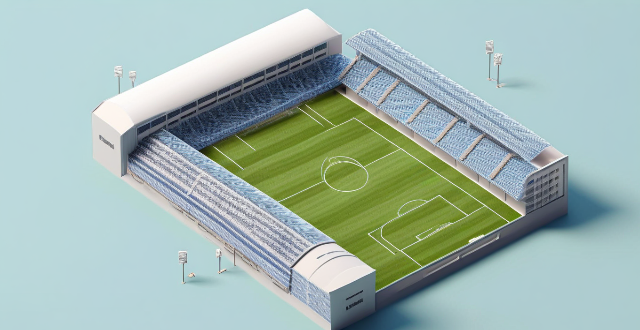
What role does technology play in the design of a sports stadium ?
Technology has revolutionized the design of sports stadiums, enhancing fan experience with interactive displays, mobile apps, and augmented reality. It also improves functionality and safety through advanced lighting systems, security cameras, and smart building management systems. As technology evolves, we can expect more innovative solutions that will further transform the way we enjoy sports events.

How does the type of sport influence the design of a sports stadium ?
The type of sport played in a stadium significantly influences its design, with each sport having unique requirements and considerations. The size and layout of the stadium must accommodate the specific dimensions needed for the sport, such as a larger soccer field compared to a basketball court. The seating capacity is also influenced by the popularity of the sport, with larger stadiums often required for sports with large fan bases. Facilities and amenities within the stadium are tailored to the sport, including specialized equipment or technology like scoreboards for sports that require them. Acoustics play a role in some sports, with quiet environments necessary for tennis matches and louder environments for football games. Safety and security measures are also tailored to the sport, with additional padding or barriers needed for contact sports and extra security measures for sports that attract rowdy fans. In conclusion, the design of a sports stadium is heavily influenced by the type of sport being played, requiring unique considerations for each sport's needs in terms of size, layout, facilities, acoustics, and safety.

How can a sports stadium be designed to enhance fan engagement and experience ?
Designing a sports stadium to enhance fan engagement and experience requires careful consideration of various factors. These include seating arrangements, technology integration, amenities, and more. Key strategies for designing an engaging stadium involve creating premium seating options near the field, ensuring good viewing angles, providing comfortable seating, offering strong Wi-Fi connectivity, developing mobile apps, installing large screen displays, integrating interactive features, offering a variety of food and beverage options, ensuring ample restroom facilities, creating merchandise stores, designating family-friendly areas, using music and lighting effects to create an energetic atmosphere, encouraging fan interaction through contests and giveaways, and planning themed events around holidays or special occasions. By prioritizing these factors, you can ensure that your sports stadium becomes a destination for sports enthusiasts seeking an exceptional experience.

What are the key factors to consider when designing a sports stadium ?
When designing a sports stadium, several key factors must be considered to ensure its success and functionality. These include location and accessibility, capacity and seating arrangement, facilities and amenities, technology and infrastructure, and environmental sustainability. The stadium should be easily accessible by public transportation and have adequate parking spaces. It should also have clear pedestrian access points and designated areas for disabled spectators. The size of the stadium should match the expected number of spectators, and the seating layout should provide good sightlines and comfortable viewing angles. Concessions, restrooms, first aid stations, and security measures should also be taken into account. Modern technology like scoreboards, Wi-Fi connectivity, and sound systems are essential for enhancing the fan experience. Finally, environmental sustainability features such as energy efficiency, water conservation, and waste management systems should be incorporated into the design to minimize the stadium's impact on the environment.
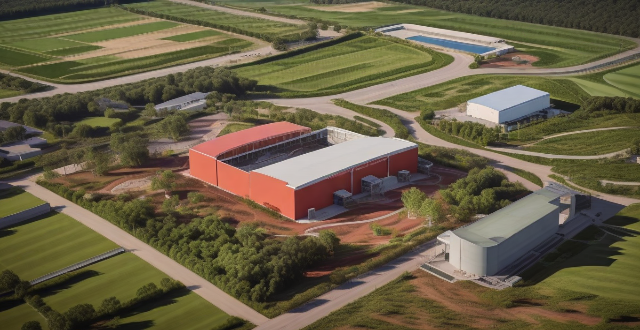
What is the connection between deforestation for stadium construction and increased greenhouse gas emissions ?
Deforestation for stadium construction leads to increased greenhouse gas emissions by reducing carbon sinks, disturbing soil, consuming energy during construction and operation, altering albedo, increasing transportation-related emissions, generating waste, affecting biodiversity, and changing water regulation. Mitigation strategies include sustainable design, using renewable energy, promoting public transportation, carbon offsetting, and effective waste management.

Where will the next Summer Olympics football tournament be held ?
The next Summer Olympics football tournament will take place in Tokyo, Japan from July 23 to August 8, 2021. The matches will be played at several stadiums across Japan, including Saitama Stadium, Sapporo Dome, International Stadium Yokohama, Nippon Gaishi Stadium, and Kashima Soccer Stadium. There will be 16 men's national teams and 12 women's national teams competing for gold medals in their respective categories. Due to the COVID-19 pandemic, there have been some changes to the schedule and format of the tournament, including limited spectators, staggered scheduling, and regular testing for all participants.

What are some examples of sustainable sports facilities ?
Sustainable sports facilities prioritize environmental responsibility, incorporating features like renewable energy sources and water conservation techniques. Examples include the Bird's Nest Stadium in Beijing, Emirates Stadium in London, Olympic Aquatics Centre in London, Mercedes-Benz Arena in Berlin, and Allianz Field in Minnesota. These facilities demonstrate how sustainability can be integrated into sports infrastructure to minimize environmental impact while providing high-quality experiences for athletes and spectators.

How does clean energy investment compare to traditional energy investment ?
Investing in energy sources is crucial for the development and growth of any economy. However, the choice between clean energy investment and traditional energy investment has become a significant topic of discussion in recent years. This comparison will explore the differences between these two types of investments, focusing on their costs, benefits, and potential impacts on the environment and society.
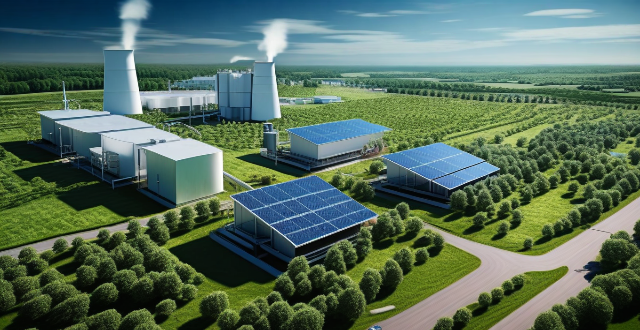
How do renewable energy sources contribute to industrial energy efficiency improvements ?
Renewable energy sources like solar, wind, hydropower, biomass, and geothermal power play a crucial role in enhancing industrial energy efficiency. They offer benefits such as reduced greenhouse gas emissions, lower operating costs, and increased reliability. By adopting these technologies, businesses can reduce their reliance on fossil fuels, increase energy independence, and contribute to a more sustainable future.

What is the future of nuclear energy in the energy market ?
The future of nuclear energy is promising, as it has advantages such as low carbon emissions, high energy density and baseload power. However, challenges like safety concerns, waste disposal, and high costs must be addressed. Increasing demand for clean energy, advances in technology, and integration with renewable sources can drive the growth of nuclear energy in the future.
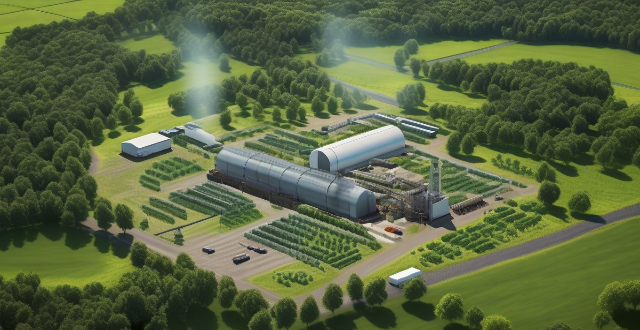
What is energy transition and why is it important ?
Text: Energy transition is the shift from traditional to renewable energy sources, important for reducing greenhouse gas emissions, promoting sustainable development, and improving energy security. Benefits include economic growth, environmental protection, and social progress.

What is the future outlook for clean energy investment ?
The future outlook for clean energy investment is positive, driven by government policies, technological advancements, and growing demand for sustainable energy sources. However, challenges related to intermittency, infrastructure integration, and competition from fossil fuels need to be addressed to ensure the continued growth of the sector.

Can using energy-efficient appliances help cut down electricity consumption ?
Energy-efficient appliances can help cut down electricity consumption by using less power than traditional counterparts, leading to cost savings and environmental benefits. Examples include LED light bulbs, smart thermostats, and energy star certified refrigerators.
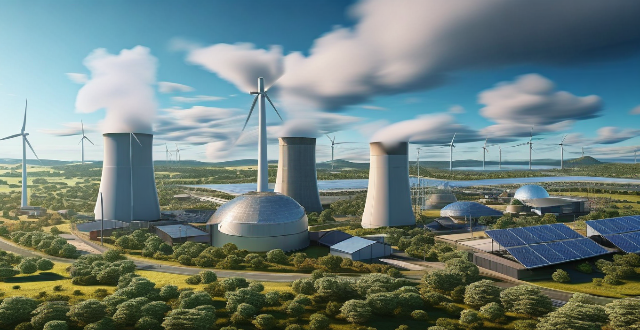
What role do renewable energy sources play in distributed energy systems ?
Renewable energy sources are crucial for distributed energy systems due to their clean, sustainable nature and local generation capabilities. They reduce carbon emissions, enhance energy security, promote local economic development, improve energy efficiency, and enable innovation in these systems.
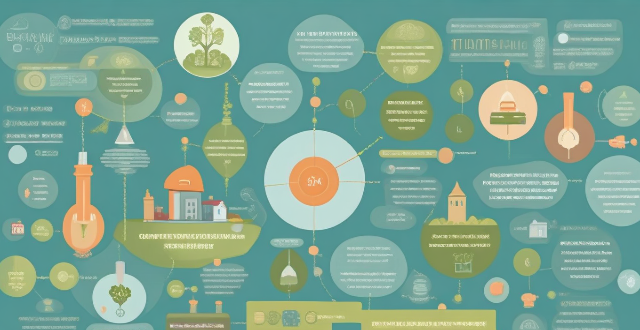
What impact does climate change legislation have on renewable energy development ?
Climate change legislation significantly influences renewable energy development by providing financial incentives, establishing mandated targets, supporting research and infrastructure, creating consumer awareness, fostering international cooperation, implementing regulations, setting environmental standards, and promoting economic growth through job creation. These measures collectively drive the energy sector towards sustainability and a low-carbon future.
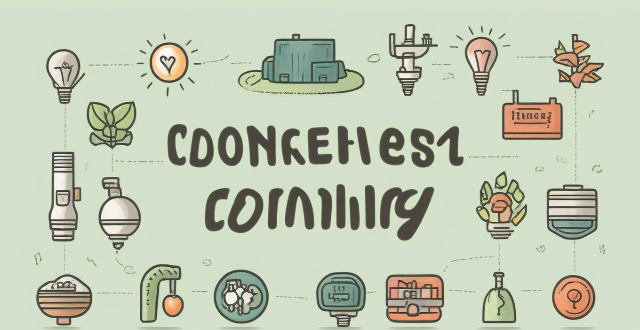
What is the relationship between energy-efficient appliances and overall energy savings ?
The text discusses the connection between energy-efficient appliances and overall energy savings, defining such appliances as those engineered to meet specific efficiency standards. These devices reduce direct energy consumption through lower power requirements and advanced technology, leading to long-term cost benefits and environmental advantages like reduced greenhouse gas emissions. To maximize savings, consumers should research and maintain these appliances properly and replace older models. The relationship underscores the importance of energy-efficient appliances in achieving energy savings for a more sustainable future.
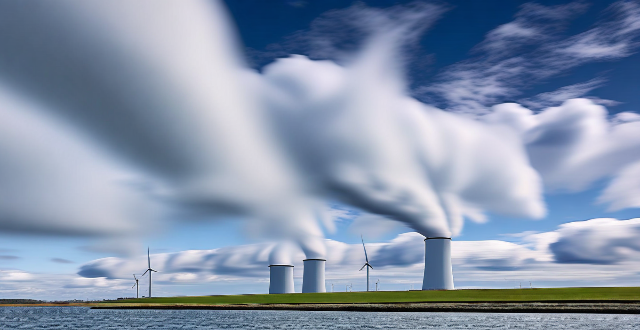
What is the impact of climate change on the energy market ?
Climate change impacts the energy market by increasing demand for cooling, causing unpredictable weather patterns, rising sea levels, and shifting energy sources towards renewables.

What are the main sources of sustainable energy ?
The text discusses the various main sources of sustainable energy, including solar energy, wind energy, hydropower, geothermal energy, bioenergy, tidal and wave energy, and hydrogen energy. It also highlights the importance of adopting sustainable energy for environmental impact, economic benefits, energy security, and health considerations. The transition to sustainable energy requires investment, policy support, and technological innovation.
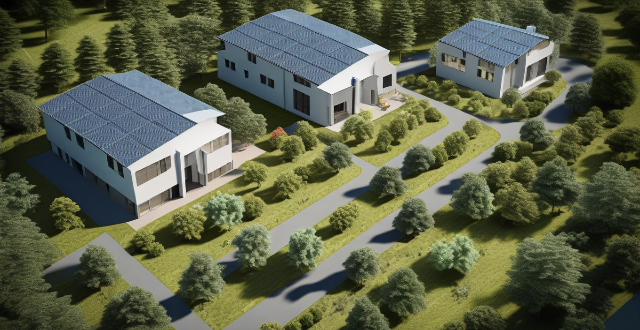
How is digital technology transforming the energy market ?
Digital technology is revolutionizing the energy market by improving efficiency, enhancing renewable energy sources, facilitating decentralized energy production, enabling smart buildings and homes, and promoting transparency and accountability. This transformation is crucial for meeting the increasing global demand for energy while addressing environmental concerns.
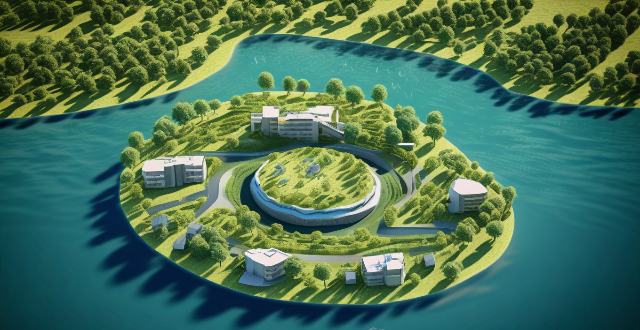
How can sports contribute to environmental sustainability ?
Sports can contribute to environmental sustainability by adopting practices that reduce energy consumption, minimize waste generation, conserve water resources, and encourage sustainable transportation options. These practices include using renewable energy sources, designing energy-efficient facilities, reducing single-use plastics, implementing composting programs, harvesting rainwater, installing water-saving fixtures, promoting public transit and active transportation, and investing in carbon offsetting programs. By incorporating these strategies into their operations and event planning processes, sports organizations can help protect our planet while continuing to inspire people around the world through athletic achievements.

What are the most effective ways to improve energy efficiency in buildings ?
Improving energy efficiency in buildings is essential for environmental and financial reasons. Effective methods include proper insulation, efficient lighting solutions, using energy-efficient appliances, smart controls, harnessing renewable energy sources, and conserving water. These strategies not only reduce operational costs but also create healthier spaces while contributing to sustainability.

What impact do energy storage solutions have on the economics of renewable energy ?
Energy storage solutions significantly impact renewable energy economics by addressing variability and unpredictability. They enhance grid stability, reduce costs, and increase efficiency, thus making renewable energy more viable. With ongoing technological advancements, energy storage will continue to play a crucial role in integrating renewable energy into power grids and achieving global decarbonization goals.
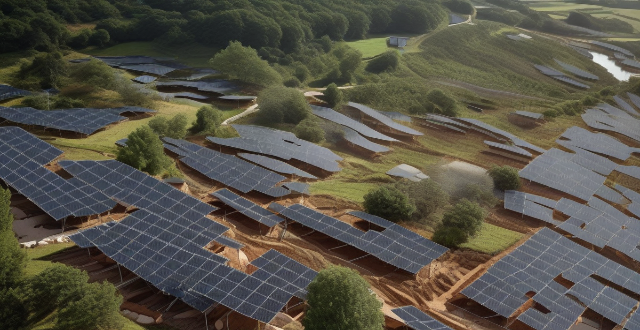
How does wind energy compare to solar energy ?
Wind energy and solar energy are both renewable sources of energy that have gained popularity in recent years. Wind turbines can generate electricity with high efficiency and low maintenance cost, while solar panels have a low initial cost and long lifespan. However, wind turbines can create noise pollution and have limited availability, while solar panels rely on sunlight and require a large amount of land. Both sources have their advantages and disadvantages, making them suitable for different applications.
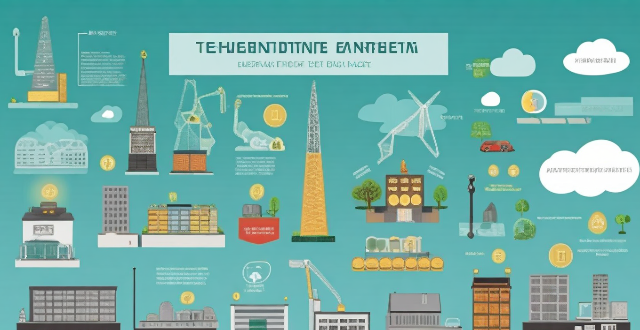
How is renewable energy affecting the traditional energy market ?
Renewable energy sources are having a significant impact on the traditional energy market, affecting pricing, market share, job creation, and environmental concerns. The increased efficiency and reduced installation costs of renewable technologies have made them more competitive with traditional energy sources, leading to declining electricity prices overall. Additionally, the growing demand for renewable energy sources has led to an increase in their market share, particularly for solar and wind power. The transition to renewable energy is also creating new job opportunities across various sectors of the economy, while addressing environmental concerns associated with fossil fuel consumption.

What policies are necessary to encourage the adoption of energy storage solutions ?
Energy storage solutions are becoming increasingly important in the modern world. They provide a way to store excess energy generated by renewable sources, such as solar or wind power, for use at a later time. This can help to balance the grid and ensure a stable supply of electricity....

How can existing buildings be retrofitted for energy efficiency ?
Retrofitting existing buildings for energy efficiency involves several strategies, including conducting an energy audit, upgrading insulation, installing energy-efficient windows and lighting systems, optimizing HVAC systems, using energy-efficient appliances, implementing water-saving measures, sealing air leaks, investing in renewable energy sources, and encouraging energy-conscious behavior. These steps can lead to cost savings, increased comfort, and reduced environmental impact.

How does energy transition contribute to combating climate change ?
The text discusses the importance of energy transition in combating climate change. It outlines how this transition contributes to reducing carbon emissions, increasing energy efficiency, promoting sustainable practices, stimulating innovation and economic growth, integrating smart grids and energy storage, and enhancing international cooperation. The shift from fossil fuels to renewable energy sources is crucial for mitigating global warming by directly addressing greenhouse gas emissions.
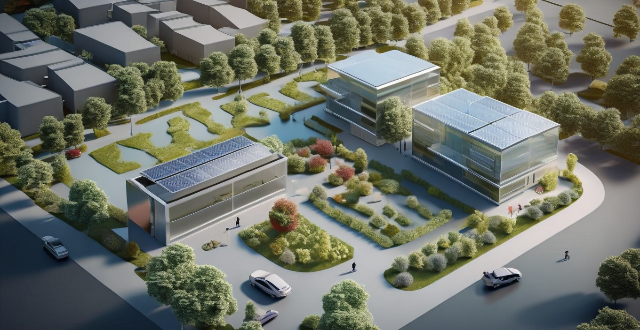
How does ecological design impact energy efficiency in buildings ?
Ecological design significantly impacts energy efficiency in buildings through various strategies like passive solar design, advanced insulation, renewable energy sources, energy-efficient appliances, water conservation, and sustainable material choices. These practices reduce energy consumption, lower operational costs, and minimize environmental harm.